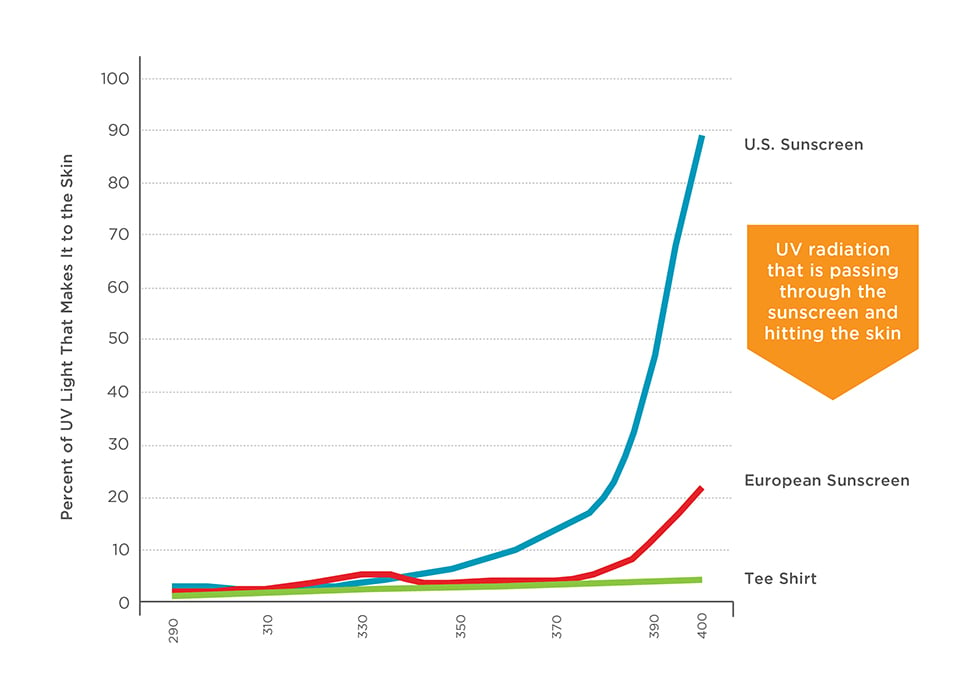I've been doing more tests and research, and I've purchased an UV flashlight rated 365nm, and when I tested my window tint with 365nm UV light, I found that all of them does a great job in blocking 99% of UV light at that wavelength. (3M, Alpine, Suntek)
So things started to make sense. The first UV flashlight I used is rated at 390nm, and that is the wavelength the window tint had trouble with. So I started to wonder: "Why do tint manufacturer not care about UV at 390nm?" My UV reading glasses thinks 390nm UV is important enough to block, but is there some inherent problem where a sheet of tint can't block above a certain wavelength?
I don't have a real answer, but I can only make some assumptions:
- in the 80's we discovered that besides UVB, UVA is also harmful to us, so the FDA began putting in standard for measuring UVA absorption rates. Ince that time, other countries had improved on the method to measure UVA protection, and Japan's standard is the most widely used in the world today, and is a standard that measures the 320nm to 400nm wavelength called the "In vitro PPD method". Meanwhile in America we have been slow to adopt the new standard, with their old system being focused on the 370nm as the "critical wavelength" for UVA.
- Companies making products to block UV probably ended up using 370nm as the standard for testing and rating their products. Blocking 99% of 370nm UV = 99% UV protection. Ability to block UV at 380 to 400nm were mostly omitted by sunscreen manufactures, and I think the same happens for window tint manufacturers.
- Not knowing any history, I assumed that UVA is 320nm to 400nm, and I assumed that all "UV blocking" products will block those wavelengths, but I had been mistaken. It seems to suggest that the 380 to 400nm range is harmless, therefore blocking this wavelength is not needed, but that sounded a bit too convenient, so I did more research.
- In 1996 Japan devised a standard for rating UV blocking products called "in vitro persistent pigment darkening (PPD)", it covers UVA from range 320 to 400nm, and is widely used around the globe today. Except that the FDA is not adopting this standard. Some articles states that the aging FDA ratings are putting Americans in health risk as today's sunscreens are often lacking in UVA protection, and many popular sunscreens from the US were rejected by the UK because of their performance.
- A scientific paper published in 2018 states that: "The effects of very long-wave UVA (>380 nm) and visible radiation (≥400 nm) are much less known. Sunscreens have been beneficial in inhibiting a wide range of photodamage, however most formulations provide very little protection in the long wave UVA region (380–400 nm) and almost none from shortwave visible wavelengths (400–420 nm)." The conclusion suggest that UVA at 380 - 400 nm are still harmful. And if that's only been suggested in 2018, I can assume that most industries are not putting this range of UV as a focus.
- (source: The UV/Visible Radiation Boundary Region (385–405 nm) Damages Skin Cells and Induces “dark†Cyclobutane Pyrimidine Dimers in Human Skin in vivo)
So now I have a clear picture to why I'm getting the results that I did. I understand potentially why all the window tint I came across do not block 390nm UVA, and I hope that in the future, either as FDA updates their ruling, or when we discover better formulas, we will have a truly "broad spectrum" window tint on the market. Meanwhile, there are still many window tint that I haven't tested, so maybe something is out on the market already.
Lastly, the FDA had proposed new sunscreen rules to make sunscreen safer, but it still haven't addressed any changes to the SPF standard. FDA is rigorously testing the 16 sunscreen ingredients available in the states, but somehow still doesn't test any of the popular ingredients in Europe and Asia. For now, I'm buying better sunscreen from overseas. Thanks Amazon!
Some graphic so show the performance of sunscreen. I think the window tint performs similar with a gradual drop off:
(
EWG's 2019 Guide to Safer Sunscreens)
I also need to state that many of these info are completely new to me, and I still have a lot to learn. Also there might have been errors on my understanding, so apologies in advance if I've gotten anything wrong.
I've also updated my blog on this subject: (
UV Test on Window Tint)
* Other sources
(
Sunscreen Regulations Haven’t Aged Well)
(
After More Than A Decade, FDA Still Won’t Allow New Sunscreens | May 18, 2015 Issue - Vol. 93 Issue 20 | Chemical & Engineering News)



